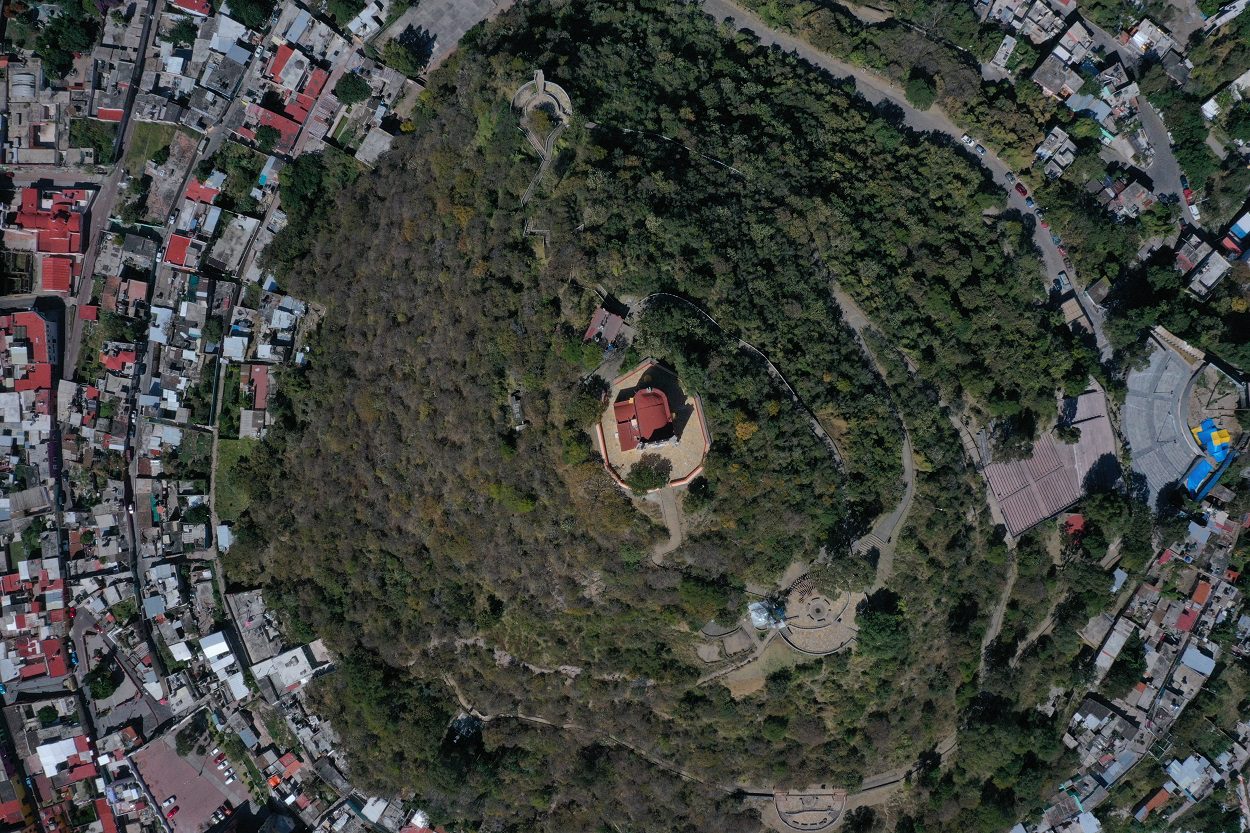Archaeologists from the National Institute of Anthropology and History (INAH) have confirmed a local legend of a temple on the Cerro de San Miguel in the Mexican city of Atlixco.
Generations of people have spoken of a pre-Hispanic temple on the hill’s summit, which for the first time has been explored by researchers from INAH as part of a project by the Ministry of Culture of the Government of Mexico.
Before the arrival of the Spanish, the area of present-day Atlixco was first inhabited by the Teo-chichimecas, and later the Xicalanca, before being subjugated by the expanding Aztec Empire.
Ethnohistoric sources refer to a settlement named Cuauhquechollan, which was occupied continuously from the Early Preclassic period to the middle of the Late Postclassic, later relocated 20 km to the southwest in present-day Huaquechula.
Towering above the region is the Cerro de San Miguel, pyramidal shaped hill of volcanic origin, which today sits the Saint Michael the Archangel Chapel on the summit. During a series of works to improve walkways and viewpoints on the hill, archaeologists conducted surveys and an archaeological investigation of the church’s atrium.
The initial study uncovered thick layers of construction fills made with earth and stones, which were used to level the rocky summit and create a platform. Within the construction fill the researchers found fragments of clay vessels, stone tools, and artefacts which date from the Late Preclassic to Early Postclassic period.
To find evidence of subsurface structures, the team excavated to a depth of 25 centimetres beneath the current level of the atrium, revealing the remains of a lime and sand floor delimited by a wall. Further excavations at a depth of 90 centimetres found a second floor, confirming that a structure was built on the hill summit during two phases.
According to the researchers, the discovery is likely a teocalli, a temple usually built on the summit of a truncated pyramid, confirming the oral tradition spoken by generations of people since the Spanish conquest.
Header Image Credit : Shutterstock





